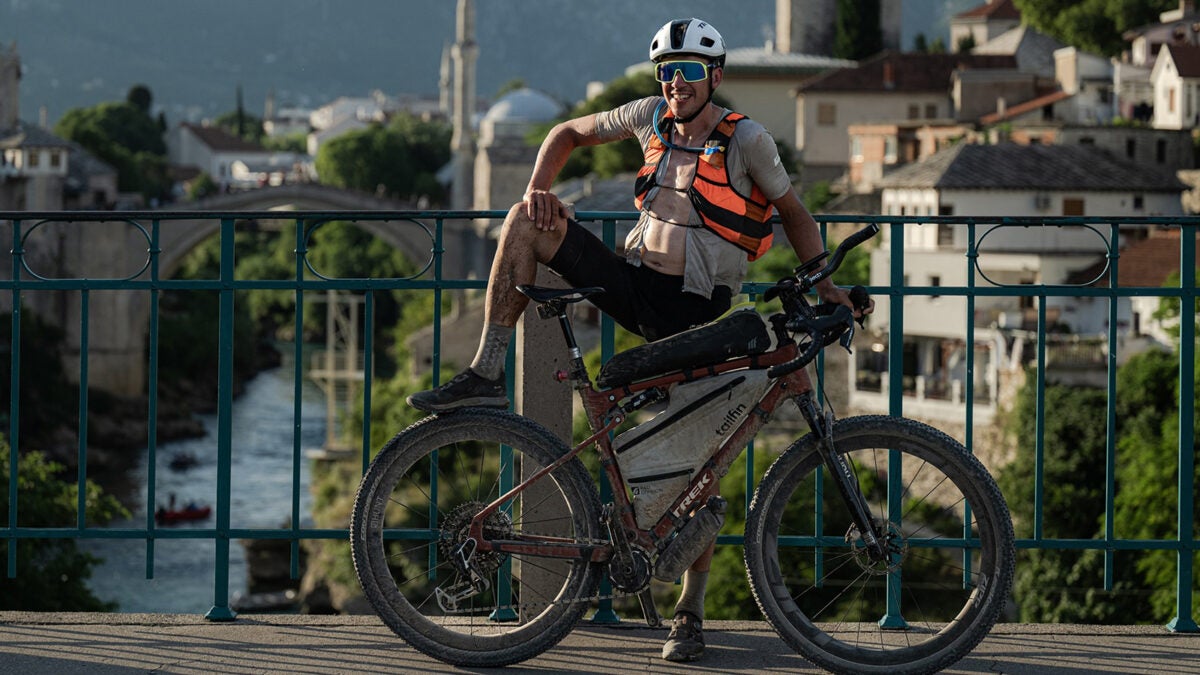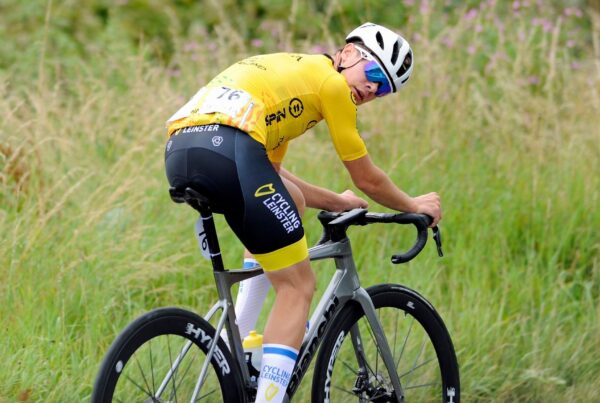
.
.
.
#GravelBike #FullSuspension #TrekBikes #OffRoadCycling #GravelRacing #BikeTech #CyclingInnovation #UltraEndurance #BikeDesign #SuspensionFork #GravelAdventures #CyclingGear #BikePrototype #GravelLife #RideGravel
Source link
Trek is reportedly testing a new full-suspension gravel bike, which was spotted under ultra-endurance rider Justinas Leveika during the 2024 Trans Balkans Race. The prototype bike features a suspension fork and a linkage-driven rear shock, along with generous tire clearance, suggesting it is designed for aggressive off-road gravel racing. This bike appears to be part of a growing trend in the gravel bike market, where the lines between traditional cross-country (XC) mountain bikes and gravel bikes are increasingly blurred by the addition of suspension systems. However, the question remains whether full suspension is the right direction for gravel bikes.
### The Bike’s Design and Features
The new Trek gravel bike is distinct from the brand’s current gravel offerings, the race-focused Checkmate and the adventure-ready Checkpoint, both launched in August 2024. While the Checkmate and Checkpoint have maximum tire clearances of 45mm and 50mm, respectively, they lack rear suspension, making the new prototype a clear departure. The bike’s design includes a RockShox Rudy Ultimate XPLR fork, available in 30mm or 40mm of travel, paired with Continental RaceKing tires mounted on Zipp 303 Firecrest wheels with a 25mm internal rim width. The tire setup suggests the rear triangle can accommodate at least 57mm tires, placing it in the same category as bikes like the 3T Extrema Italia and Allied Able.
The drivetrain features the latest generation of SRAM Red cranks, indicating compatibility with the SRAM DUB Wide 47.5mm chainline, likely limiting the bike to 1x drivetrains. The rear suspension system uses a RockShox SIDLuxe shock mounted near the seat tube and driven by a rocker link connected to a one-piece flex-stay rear triangle, similar to modern XC mountain bikes. The shock appears to offer 40-50mm of travel, differing from Trek’s proprietary IsoStrut system found on the SuperCaliber.
### The Trend Toward Suspension in Gravel Bikes
The inclusion of full suspension on gravel bikes represents a significant shift in the industry. While larger tires have been the dominant trend in gravel bikes, offering improved grip and comfort, the addition of suspension is a more contentious development. Other brands have experimented with suspension on gravel bikes, such as the Niner MCR 9 RDO, which featured traditional suspension front and rear before being discontinued in late 2023. Pseudo-suspension systems, like those found on the Specialized Diverge STR, Antidote Pathseeker, and BMC URS LT, have also emerged, offering gravel-specific suspension solutions without traditional shock systems.
Additionally, bikes like the Lee Cougan Innova Super Gravel and Io oooboros have drawn inspiration from XC hardtails, combining drop bars with hardtail-like tire clearances and suspension forks. However, these designs have yet to gain widespread popularity. Suspension forks, while beneficial on rough terrain, have not been widely adopted by gravel riders, who often prefer the simplicity, lower weight, and reduced maintenance of wider tires over suspension systems.
### The Challenges of Suspension on Gravel Bikes
The primary challenges of adding suspension to gravel bikes are weight and cost. Suspension systems typically add complexity and expense, which can deter riders who prioritize lightweight and affordable setups. Additionally, the maintenance requirements of suspension components may be a barrier for gravel cyclists, who often favor low-maintenance bikes for long-distance and multi-day rides.
While suspension can improve comfort and control on rough terrain, it may not be necessary for all gravel riding conditions. Wider tires, combined with advancements in tire technology, can provide sufficient cushioning and grip for most gravel surfaces without the added weight and complexity of suspension systems.
### Conclusion
Trek’s new full-suspension gravel bike prototype represents an intriguing development in the gravel bike market, further blurring the lines between gravel bikes and XC mountain bikes. While the bike’s design suggests it is well-suited for aggressive off-road racing, the broader adoption of suspension on gravel bikes remains uncertain. Suspension systems offer clear benefits on rough terrain, but their added weight, cost, and maintenance requirements may limit their appeal to a niche segment of gravel riders. As the industry continues to innovate, it will be interesting to see whether full-suspension gravel bikes gain traction or remain a specialized option for a select group of riders. Until then, the debate over the role of suspension in gravel biking will likely continue.







